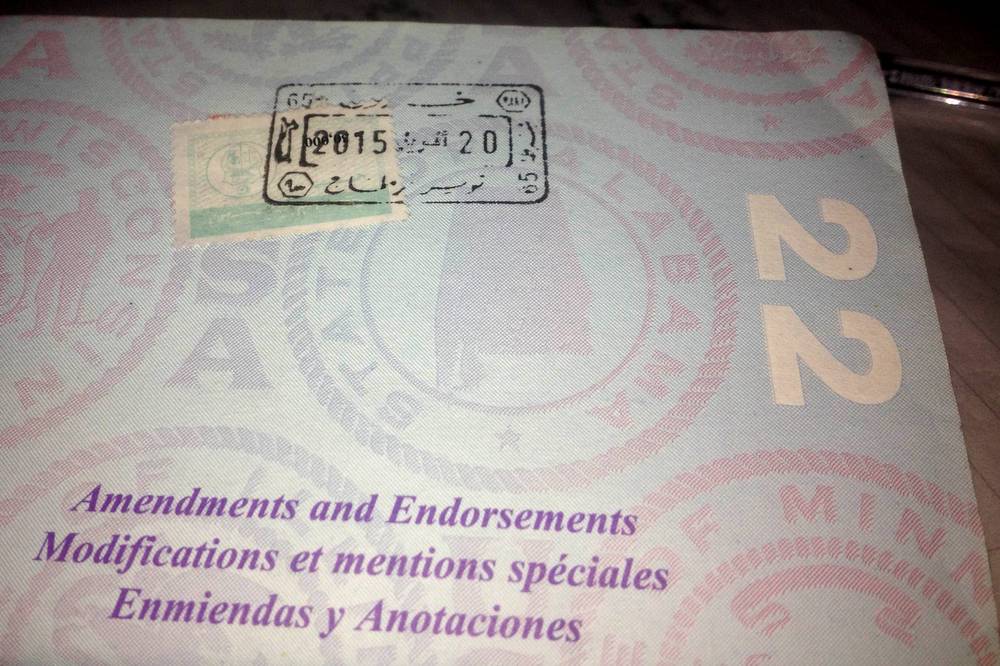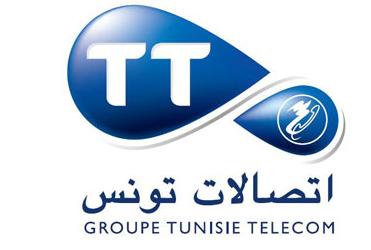Of all the countries we visited during our epic trip across Europe and Northern Africa, Tunisia is one of the few we both agreed would be worth a return trip. The liberal Muslim country is relatively easy to get around, and while not the cheapest destination ever is still plenty affordable.
In general
- Arabic is the first and most common language, but French runs a close second. English speakers would do well to look for the French as they go, as English is a distant third both in writing and speaking.
- First-world passport holders get 90 days visa-free, but you’ll have to pay an ‘exit fee’ (sometimes called a ‘solidarity fee’) of 30 dinars. Physically speaking, it’s a small postage-like stamp you’ll need to pick up before you go through Immigration. Any of the currency exchange booths at the airport should be able to sell you one. Lick it and stick it in your passport in a place of your choice, or they’ll flip to the first page and stick it wherever they like (as they did with mine!)
- Tunisia suffered at the hands of terrorists in 2015 – a couple of incidents have done well at scaring mainstream / group tourists away. That’s a shame – and also an opportunity for independent tourists to set their own course around this amazing country.
- The southern parts of the country should be considered off-limits – specifically around the towns of Nefta, Douz, Medenine and Zarzis. Anywhere closer to the border with Algeria and the Mount Chaambi National Park should be considered no-go areas.
- While typical Western clothes are pretty common in Tunis, you’ll note people dress more conservatively the further south you go. Cover your knees and shoulders and you’ll be fine.
- Someone far more knowledge than me could write an entire post on baksheesh – the gift (or bribe) offered to beggars, people in the service industry, or passersby who help you out in some way. I’ll freely admit to not fully understanding the nuances of it all, but it seemed that if someone took time or effort to do something for your benefit, they’ve earned a small gift, at least in their minds. Coins, not bills, unless the deed done involves a serious amount of time and effort.
- French menus exist in some places, but where it’s all Arabic you may need to resort to the classic ‘point and smile’ approach.
About money
- 1 US dollar buys about 2 Tunisian dinar (TND), and has for most of 2015. It’s the best rate tourists have had in at least a decade, at least if you’re buying the local currency.
- 1 dinar = 1,000 milim – one of the only countries I’ve seen that breaks their currency into three decimal points. You’ll almost always see all three decimals used.
- You’ll typically see prices listed as DT (dinar tunisien) – thank the French for leaving behind a legacy of good bread, French-named streets, and so on.
- Officially, Tunisian currency can’t enter or leave the country. Call it a ‘non-convertible currency’ if you want to get technical, but if you’re like most people you’ll aim to get some local money when you arrive and cash it out when you leave. You shouldn’t have any problems keeping some small bills as souvenirs, but don’t expect to take a bunch of dinars to your home bank and cash in. Spend your last few dinars on food and drink.
Getting connected
- Tunisie Telecom for the win. I paid 20 dinar for unlimited 3G data for 7 days, and it came with 10 dinar worth of credit. Basic ‘just-for-calls’ phones are as cheap as 33 dinars, if you’re the sort that prefers picking up phones instead of SIM cards.
- Orange was the other booth at the Tunis airport, though I didn’t see anything in English.
- We didn’t spend a lot looking for wi-fi, but it looked to be present in many hotels. Can’t vouch for the speed, though.
At the tourist hotspots
- Tunis’ five-line tram system is pretty good for getting around the city, including to plenty of non-touristy parts of town.
- Not every tram station in Tunis has a ticket booth that’s open. Naturally, this doesn’t absolve you from purchasing a ticket, and there’s a 20 dinar fine waiting for you if you’re caught. Pick one up where you can, but there’s less of an excuse if you’re starting from a larger station.
- Getting to Carthage is pretty easy – look for the TGM line (Tunis Goulette Marsa) to head there from Tunis Nord (the downtown terminal near the clock tower).
- Around Sousse, a bus system is around but mostly unnecessary. You can walk most anywhere in the town that tourists will want to go.
- In Monastir, the mausoleum of former Tunisian president Habib Bourguiba has a metal detector – one of the only touristy places with any real security precautions in the country.
- The El Jem Coliseum is a straight walk from the El Jem train station. I’ll be writing up a separate post about this awesome place, but for now, know that the place has been preserved well enough to be a filming place for the Life of Brian and Gladiator.
On getting around
- Taxi flagfall is cheap enough (0.45 dinars), and taxis are easy enough to find. You’ll pay a 50% surcharge for rides from 9pm to 5am.
- At 40 dinars, the seven-day rail pass (the Carte Bleue) is a great deal. You can pay 60 dinars for the Classe Confort ticket, but this brand of first-class seating doesn’t exist on every train and isn’t much better than the typical first-class area in any case. Expect to need a small square passport photo, though it’s not a hard-and-fast requirement.
- Officially, your tickets have seat assignments. The locals won’t be looking and the assignments are ignored, so grab a seat where you can.
- Even with the rail pass, you’ll often be asked to pay a surcharge for air-conditioning when you purchase the ticket. This is usually only 1 or 2 dinars, and is only asked for on trips that are more than a couple hours.
- Watch out for the porters that’ll pick you up from the moment you leave the taxi. Unless you send them off they’ll have your baggage loaded on a cart and walking double-time toward your check-in. They’ll be expecting something for their services, naturally, and they’ve cleverly kept all the carts inside and well away from passengers actually arrive.
- When it’s time to depart, the very best sunrises can be seen by boarding gates 13, 14, and 15. Yes, I know this one first-hand.
Like this post? Like the Facebook page!




